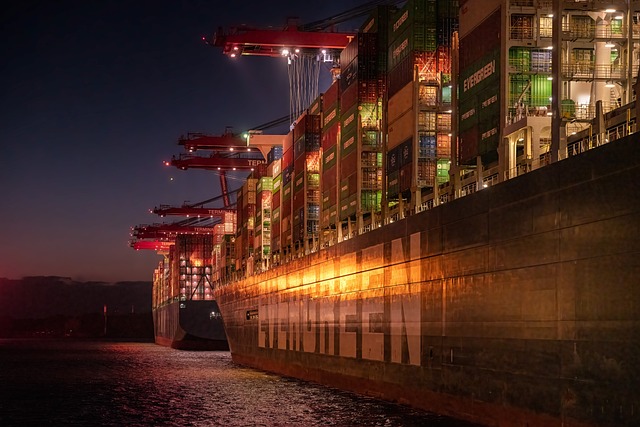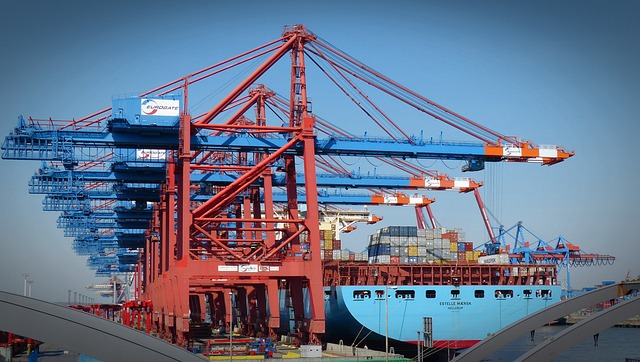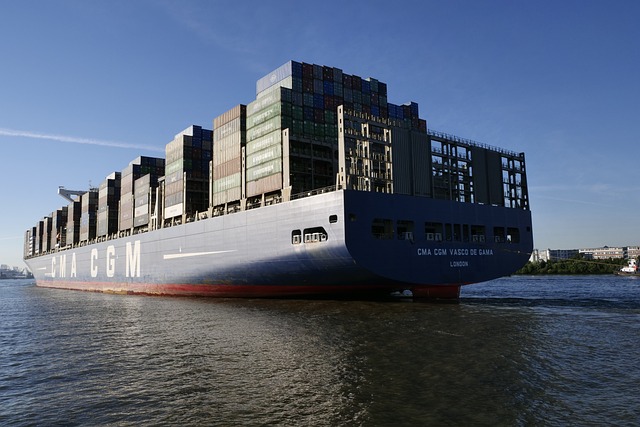The shipping container, notably ISO containers, has revolutionized global trade by offering a sustainable and efficient cargo transport solution. Their versatility enables seamless transitions between sea, land, and rail modes, reducing freight costs and time. Reusable containers minimize waste, lower carbon emissions, and promote a circular economy through leasing and rental services. This eco-friendly approach offers economic benefits to industries, reduces construction costs, and minimizes operational expenses. Modern container designs cater to diverse cargo needs, while their adaptability has led to innovative uses in urban spaces and underserved communities worldwide.
Reusable shipping containers are revolutionizing sustainable transport practices, offering a green alternative to traditional methods. This article delves into how these versatile modules mitigate environmental impact while optimizing logistics and reducing costs. From economic benefits to innovative design solutions, we explore why reusable containers are a rising trend globally. Discover successful case studies and learn how this technology is reshaping the world of shipping.
- The Rise of Shipping Containers: A Sustainable Transport Solution
- How Reusable Containers Reduce Environmental Impact
- Economic Benefits of Adopting Reusable Shipping Containers
- Innovations in Design for Efficient and Eco-Friendly Transportation
- Case Studies: Successful Implementation Worldwide
The Rise of Shipping Containers: A Sustainable Transport Solution

The rise of shipping containers has revolutionized global trade and transportation, offering a sustainable solution to the industry’s environmental challenges. These versatile freight containers, also known as intermodal containers, have become the backbone of modern container shipping. With their standardized dimensions and robust designs, they enable efficient cargo transport across various modes—from sea to land to rail—a process typically referred to as container transport or container shipping.
The widespread adoption of these modular containers, often called ISO containers, has led to significant reductions in freight costs and time. More importantly, the integration of shipping containers into logistics operations has promoted sustainable practices. They are reusable, allowing for reduced waste generation compared to traditional packaging methods. Container leasing and container rental services have further encouraged this sustainability by enabling efficient utilization, minimizing idle time, and reducing the need for constant container production, thereby decreasing carbon emissions associated with manufacturing new cargo containers like storage containers or shipping crates.
How Reusable Containers Reduce Environmental Impact

Reusable shipping containers play a pivotal role in promoting sustainable transport practices by significantly reducing the environmental impact associated with traditional freight handling. Unlike single-use shipping crates or sea containers, reusable containers are designed for multiple trips, which substantially cuts down on waste generation and resource depletion. By eliminating the need for constant production of new cargo containers, companies can lower their carbon footprint while contributing to a circular economy.
Furthermore, container shipping itself becomes more eco-friendly as efficient packing and loading processes lead to optimized space utilization, reducing fuel consumption and emissions during transport. The versatility of these intermodal containers allows them to be seamlessly transferred between modes of transportation—from ships to trains to trucks—without the need for reloading, thereby minimizing handling time and energy costs. This seamless container leasing and rental process ensures that each unit is utilized effectively, leading to overall lower environmental impacts compared to traditional cargo container practices.
Economic Benefits of Adopting Reusable Shipping Containers

Adopting reusable shipping containers offers significant economic advantages for businesses and industries heavily reliant on transport and logistics. By utilizing these versatile freight containers as modular buildings, companies can cut down on costly construction expenses and quickly adapt space according to changing needs. This flexibility is particularly beneficial in dynamic markets where rapid expansion or downsizing is required.
Moreover, the long-term savings from container leasing and container rental programs can substantially reduce operational costs. Traditional cargo containers, like ISO containers, often face significant depreciation over time, whereas reusable alternatives can be invested in and resold, creating a more sustainable and economically viable cycle. This shift towards eco-friendly shipping crates also encourages businesses to embrace green practices, fostering a circular economy and potentially opening doors to new sustainability-focused opportunities and market advantages.
Innovations in Design for Efficient and Eco-Friendly Transportation

The evolution of shipping containers has led to remarkable innovations in design that prioritize efficiency and environmental sustainability in transportation. Modern freight containers, such as ISO containers, come in various types tailored for different cargo needs. This diversity enables optimal loading and unloading processes, reducing handling time and fuel consumption. For instance, high cube containers offer increased internal space for larger items, while refrigerated containers ensure the safe transport of temperature-sensitive goods.
Moreover, modular containers like office and storage containers showcase their adaptability in various applications beyond traditional cargo transport. These versatile shipping crates can be quickly assembled and converted into temporary offices, warehouses, or even living spaces, promoting sustainable practices by reducing the demand for new construction materials. The versatility and reusability of these intermodal containers are pivotal to container leasing and rental services, making container shipping a more eco-friendly and cost-effective solution for businesses adopting green transportation practices.
Case Studies: Successful Implementation Worldwide

The global adoption of reusable shipping containers has led to some remarkable case studies showcasing their successful implementation in various regions worldwide. One notable example is the transformation of urban areas through container-based infrastructure. Cities like Amsterdam and New York have embraced the concept, utilizing former sea containers as pop-up markets, temporary event spaces, and even modular offices. These creative uses not only reduce the need for traditional construction but also offer sustainable and cost-effective solutions for urban development.
Another successful application is in remote areas with limited access to resources. Organizations like the World Bank have facilitated container shipping as a means of providing essential services and goods to underserved communities. By converting former cargo containers into mobile clinics, libraries, or even small schools, these initiatives improve community access to vital services. This approach demonstrates the versatility of shipping containers, which can be adapted for various purposes while promoting sustainable transport practices and reducing environmental impact.
Reusable shipping containers are not just a logistical marvel; they’re a game-changer in promoting sustainable transport practices. By reducing environmental impact, offering economic benefits, and fostering innovations in design, these containers are leading the way toward a greener future for global transportation. As more companies embrace this technology, the rise of reusable shipping containers promises to create a cleaner, more efficient world.
